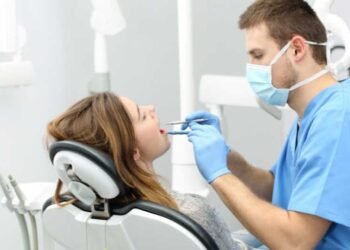Key Takeaways
- Dental emergencies can range from minor inconveniences to serious health threats.
- Knowing how to respond to common dental issues properly can prevent further damage.
- Timely professional intervention is crucial for successful outcomes.
- Understanding preventive measures can reduce the risk of dental emergencies.
What Constitutes a Dental Emergency?
Dental emergencies can be daunting as they often occur unexpectedly and require immediate attention. These situations involve issues that need urgent care, such as severe pain, significant bleeding, or even the challenge of saving a tooth. Common emergencies include broken teeth, lost fillings, excruciating toothaches, or objects wedged between teeth. Understanding what qualifies as a true dental emergency is crucial in helping you act quickly and appropriately. Seeking immediate care from an emergency dentist in Jacksonville or your local area can often make a significant difference in preserving your oral health and saving your teeth from further damage.
Immediate Steps for Common Dental Issues
Broken or Knocked-Out Teeth
Dealing with a broken or knocked-out tooth can be troubling, but quick and correct action can improve the chance of saving the tooth. First, gently rinse the damaged tooth with water. It’s critical to avoid scrubbing or removing any tissue fragments attached to the tooth. Whenever possible, carefully reinsert the tooth into its socket without forcing it. If reinsertion isn’t feasible, place the tooth in a small milk container to maintain its viability and seek immediate dental care. Time is of the essence, and the sooner you reach out to a dental professional, the better the chances of a successful reattachment.
Severe Toothaches
Severe toothaches can disrupt daily life and require prompt attention. Begin by rinsing your mouth with warm water to help soothe the area and dislodge any food particles caught between teeth using floss. Applying a cold compress externally can help reduce swelling. It’s crucial to avoid placing aspirin directly on the gums, as this can potentially burn gum tissue. Toothaches can signal deeper issues, like infections, requiring professional evaluation and treatment to prevent complications.
Lost Fillings or Crowns
Losing a filling or crown can be alarming, but knowing how to manage the situation can help mitigate immediate discomfort. If a filling falls out, a piece of sugarless gum can serve as a temporary substitute to fill the void until you can see your dentist. For dislodged crowns, clean the crown and attempt to reattach it using over-the-counter dental cement. Keep it in place until your dentist provides a permanent solution.
The Importance of Professional Intervention
Even if dental symptoms seem to subside, consulting a dental professional is necessary. Prompt treatment is vital in preventing potentially severe complications, such as infections or irreversible damage to the teeth or gums. A skilled dentist evaluates the situation holistically and recommends the best course of action, whether it involves restoring a missing filling, conducting root canal therapy, or other interventions. Professional assessment and treatment significantly reduce the risk of further complications and ensure the long-term well-being of your dental health.
How to Prevent Dental Emergencies
Prevention is, undoubtedly, the best strategy for avoiding dental emergencies. Regular dental check-ups allow professionals to catch potential issues early before they escalate. Additionally, using protective gear such as mouthguards during sports can prevent teeth and mouth trauma. Another preventive step is to avoid chewing on hard objects, which can lead to fractures or other damage. These habits form the foundation of oral health, reducing the likelihood of experiencing unexpected and often painful dental emergencies.
Preparing an At-Home Dental Emergency Kit
Being prepared can make all the difference during a dental emergency. An at-home dental emergency kit is a first aid response, providing essential relief when professional help is not immediately accessible. Key items include over-the-counter pain relievers to manage discomfort, gauze pads for stopping bleeding, dental cement for temporarily affixing crowns, a small container with a secure lid in case a tooth needs transport, and your dentist’s contact details for quick reference. This foresight in preparation can significantly ease the initial panic and provide the confidence to manage the situation more effectively until you receive professional treatment.
Conclusion: Stay Calm and Act Fast
Dental emergencies often come unexpectedly and can be overwhelming. However, the key to effective management is staying calm and acting swiftly. Armed with essential knowledge and a prepared emergency kit, you can handle unforeseen issues more confidently. Recognizing the importance of professional intervention is crucial for immediate relief, ensuring sustained dental health, and preventing long-term consequences. Taking preventive measures and being ready for emergencies can significantly minimize adverse impacts on your life.













